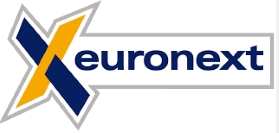All about the Euronext Stock Exchange and Their Services
Euronext is a stock exchange that has its base in Europe, with seats in Brussels, Amsterdam, Paris, Lisbon and London. As well as offering derivatives and cash markets, the Euronext group supplies listing of market data, custody and settlement services and market solutions as well as a number of other products, including exchange-traded funds (ETFs), equities, bonds, warrants and certificates, commodities and indices. As the first ever pan-European exchange, Euronext’s unique model aims to unite marketplaces that go back to the beginning of the 17th century, while incorporating the assets and strengths of each market and looking towards the future with an eye to each market’s individual heritage. The comprehensive portfolio of platforms, facilities and products offered by Euronext covers the entire range of market services, and combines an in-depth knowledge of the local marketplaces and the European financial market, with integrated technology and uniform market rules. Euronext is the Eurozone’s primary exchange, and has more than 1,300 issuers, which are worth 2.6 trillion Euro in market capitalisation. Recently, Euronext has also benefited from a regulatory decision by the Dutch government which has lifted the restrictions on capital provision requirements. This means that Euronext could be in a good position to participate in further acquisition and merger activity in the future.
| Broker | Bonus | More |
|---|
A Short History of Euronext
Euronext began to take shape in the year 2000 after the Amsterdam, Paris and Brussels stock exchanges underwent a merger. The Lisbon Stock Exchange was later also added to the group. However the origins of the exchange go all the way back to the 17th century, when the Amsterdam Stock Exchange opened in 1611. The first exchange of its kind in the world, the Amsterdam Stock Exchange was set up when the Verenigde Oostindische Compagnie sold shares in its shipping business in the Far East as a means of financing its operations. The business of this exchange expanded to include options, commodities and other financial instruments. While shares were traded in France from around 1540, the first official exchanges within France and Belgium were only established in 1801 under Napoleonic rule. The Lisbon Stock Exchange began operations in 1769 under the name Assembleia dos Homens de Negocio, but in 1999 this changed to the Bolsa de Valores de Lisboa e Porto. After the 2000 merger, the Euronext group acquired the London International Financial Futures and Options Exchange in 2001, and then the Lisbon Stock Exchange in 2002. In 2006, in order to put off a potential NASDAQ purchase of Euronext, the NYSE group signed up to a merger agreement with the Euronext group to the amount of US$10 billion. NYSE Euronext developed a Universal Trading Platform between 2008 and 2009, which is an electronic trading platform for futures markets, options, equities and bonds. NYSE Euronext was the holding company that combined those businesses, and this was listed on the Euronext Paris and New York Stock Exchange.

- Euroclear
- BNP Paribas
- BNP Paribas Fortis
- Societe Generale
- Caisse des Depots
- BPI France
- ABN Amro
- ASR
- Banco Espirito Santo
- Banco BPI
- SFPI
These investors hold a total of three seats on a nine-member board. Euronext operates as an independently listed company, and its shares are traded in Brussels, Amsterdam and Paris, with the symbol ENX.
Euronext Exchange Services
Euronext is an exchange that offers stock trading for companies that are listed across its markets, as well as bonds, equity derivatives, ETFs, commodities, foreign exchange derivatives, indices, warrants and certificates, and structured notes. There are over 1,300 stocks listed on the Euronext exchange, as well as 4,400 fixed-income securities, nine regional commodities, 20 indices, 500 mutual and exchange-traded funds, five types of equity derivative contracts, and six European regional currency contracts.
How Does Euronext Operate?
As one of its primary activities, Euronext sets common rules for its markets, which are approved by each market country’s regulatory body. It also announces the listing of financial instruments and securities on its markets, and approves applications for new listings. Part of its remit is to publish information about prices and trades, and to accept and ensure successful trading transactions between its market members. It also maintains an independent clearing house, which plays the role of a central counterparty and offers a range of financial transactions services to its issuers.
Other Products and Services Offered by Euronext
Alternext
This is a specialised segment of the market for medium-sized and small companies that lack the resources to qualify for the larger regulated market. This segment comprises over 180 listed companies, with a total market capitalisation of 8 billion Euro.
Universal Trading Platform
This is Euronext’s electronic trading service, which was set up in 2010 to facilitate trading across different products and markets. Since it was launched, the service has been made available to operations across Europe, the Middle East and Africa.
Indices
The following European equity indices are managed by Euronext:
- AEX-index
- Bel 20
- CAC 40
- PSI 20
Other educational materials
- Australian Securities Exchange (ASX)
- CAC 40 Index
- Paris Stock Exchange – Euronext Paris
- S&P 500
- Composite Index
- Toronto Stock Exchange (TSX)
Recommended further readings
- Stock exchange merger and liquidity: The case of Euronext. Nielsson U. Journal of Financial Markets. 2009 May 31;12(2):229-67.


